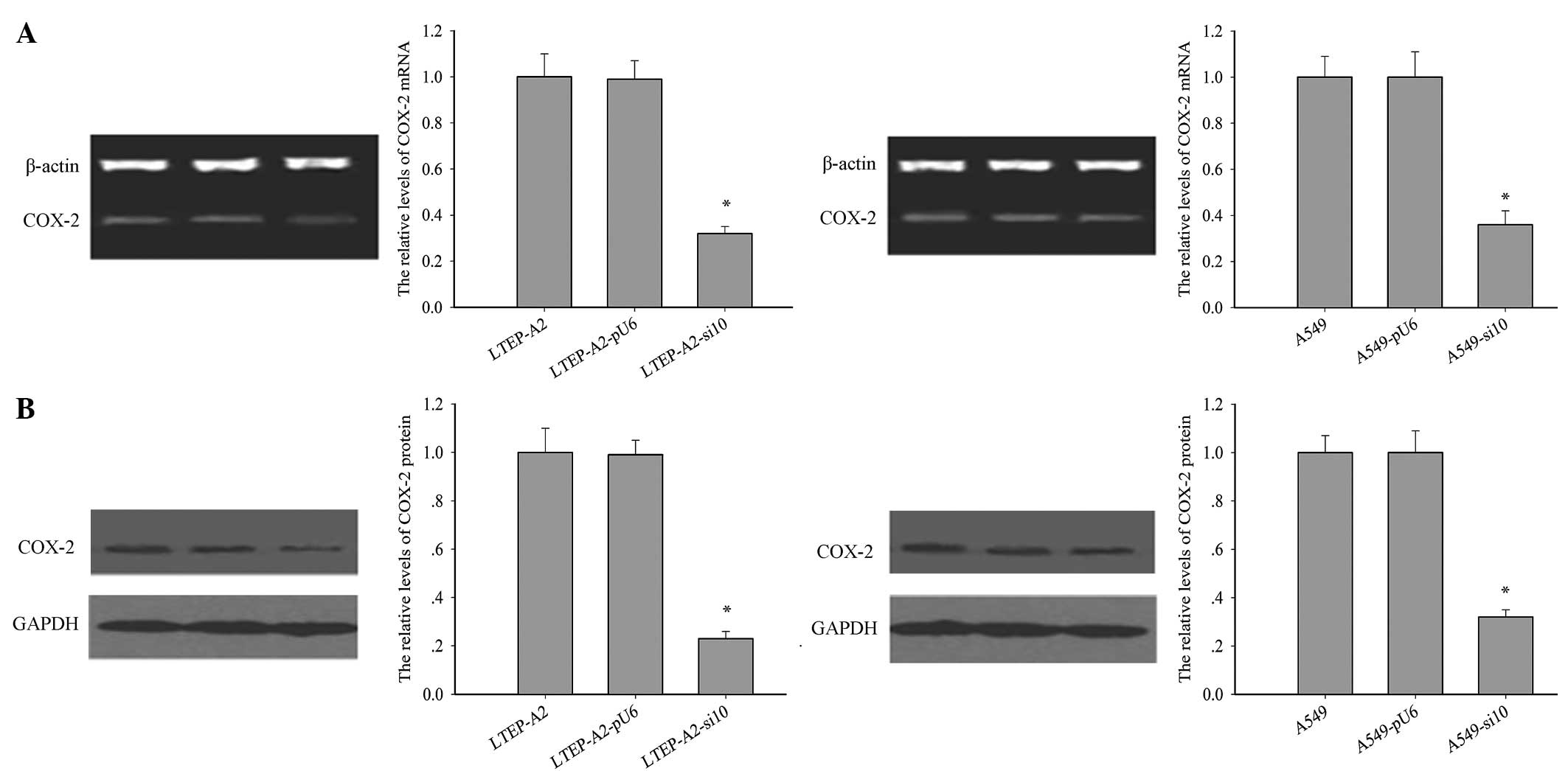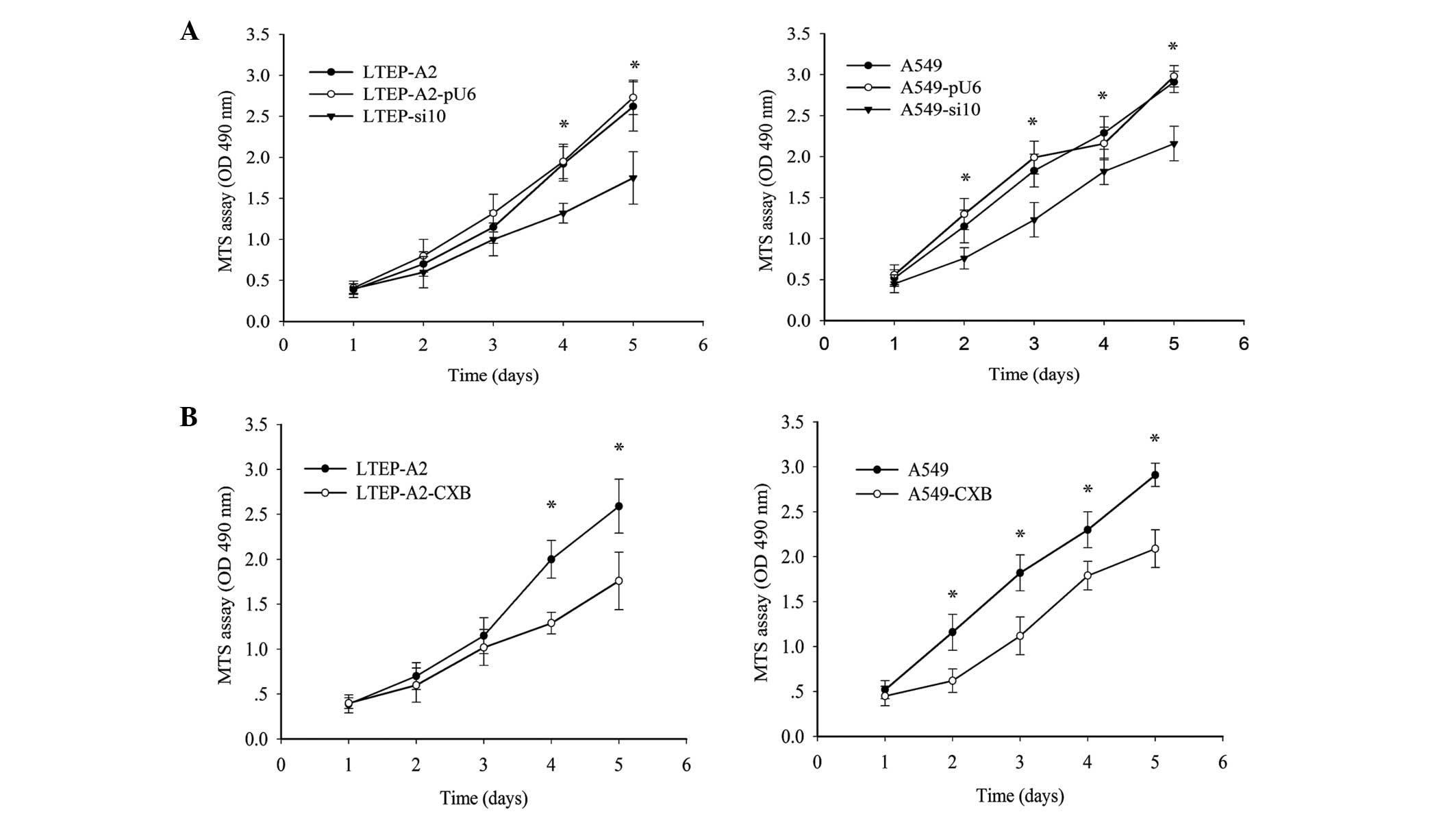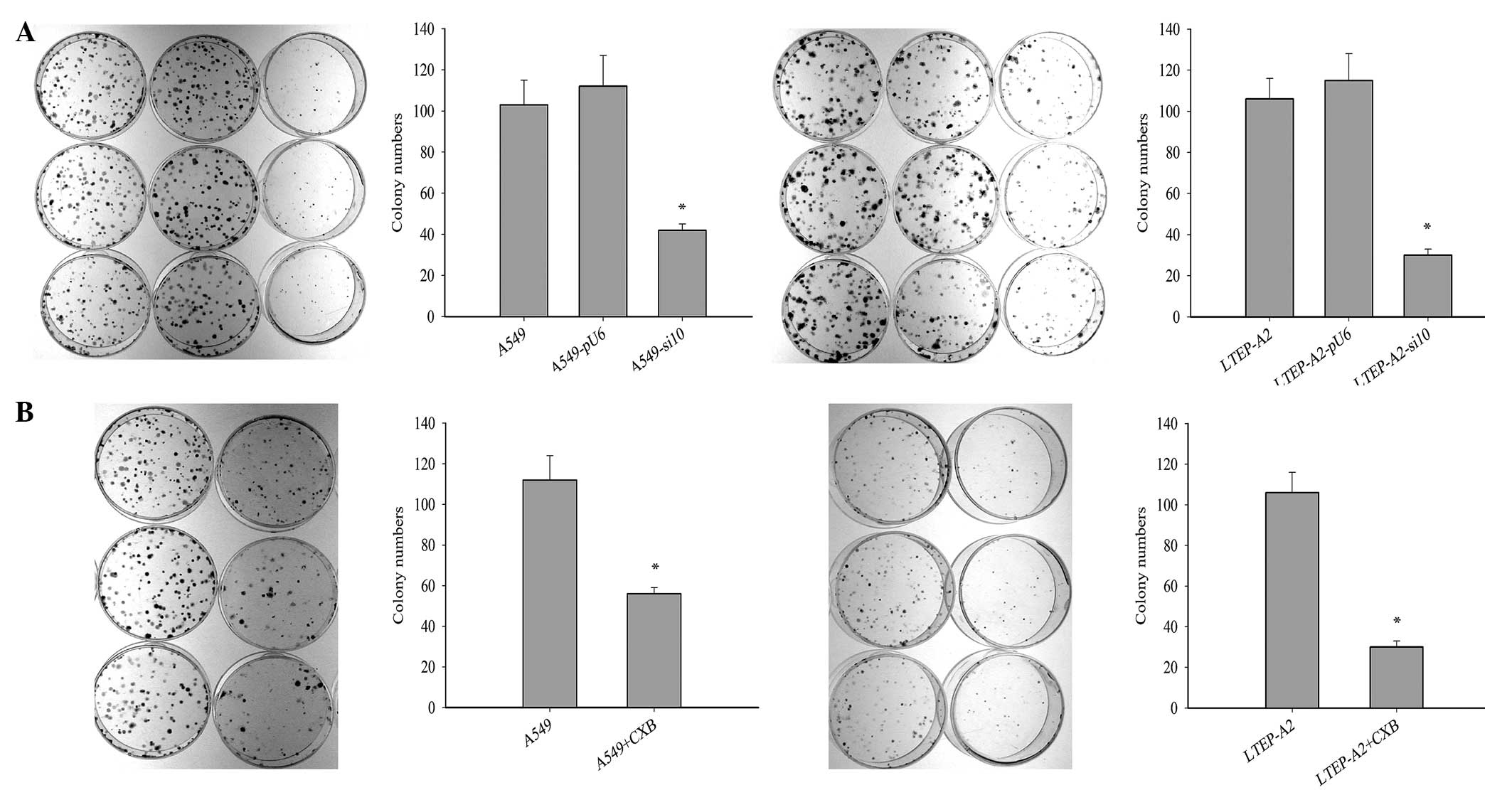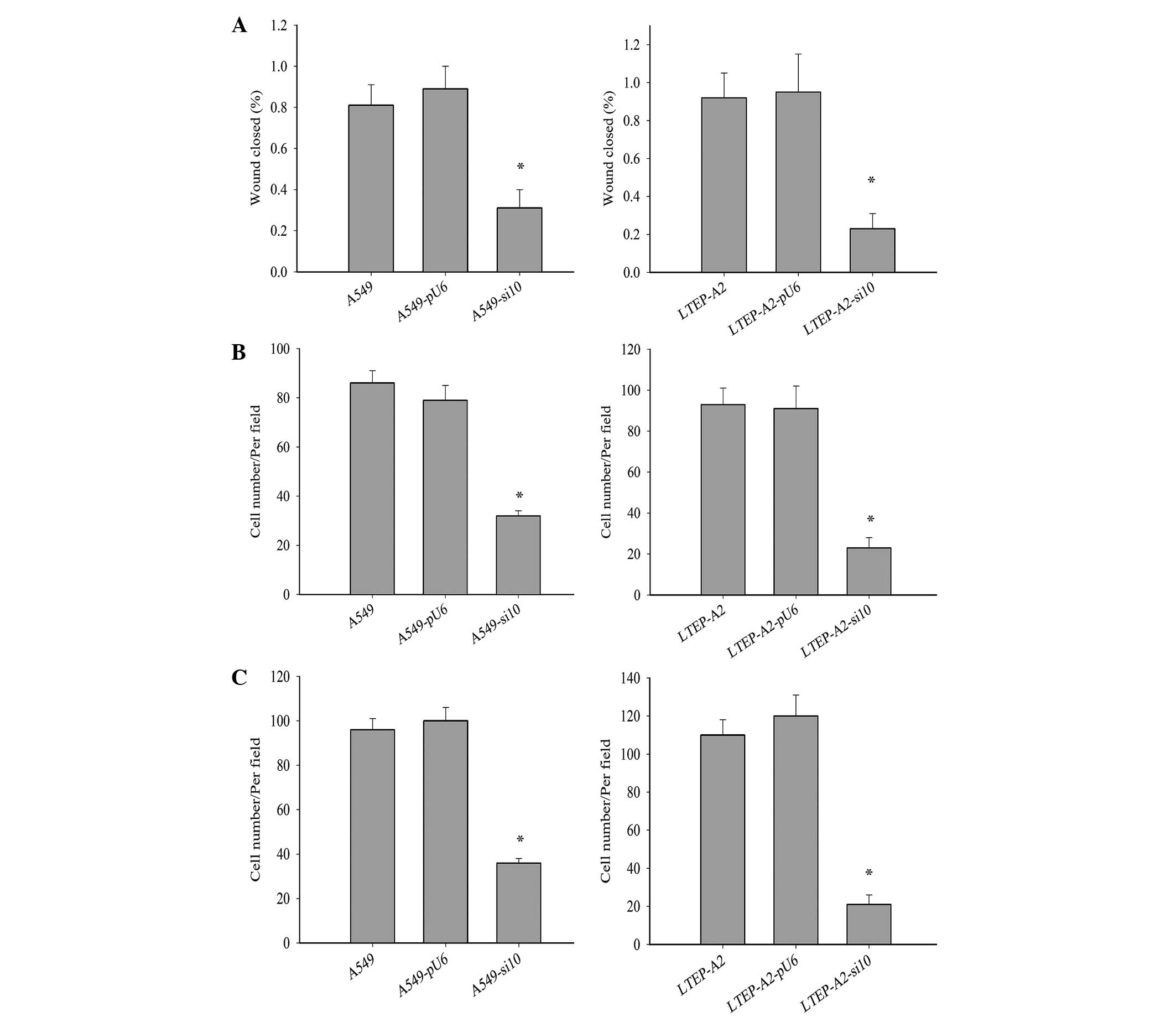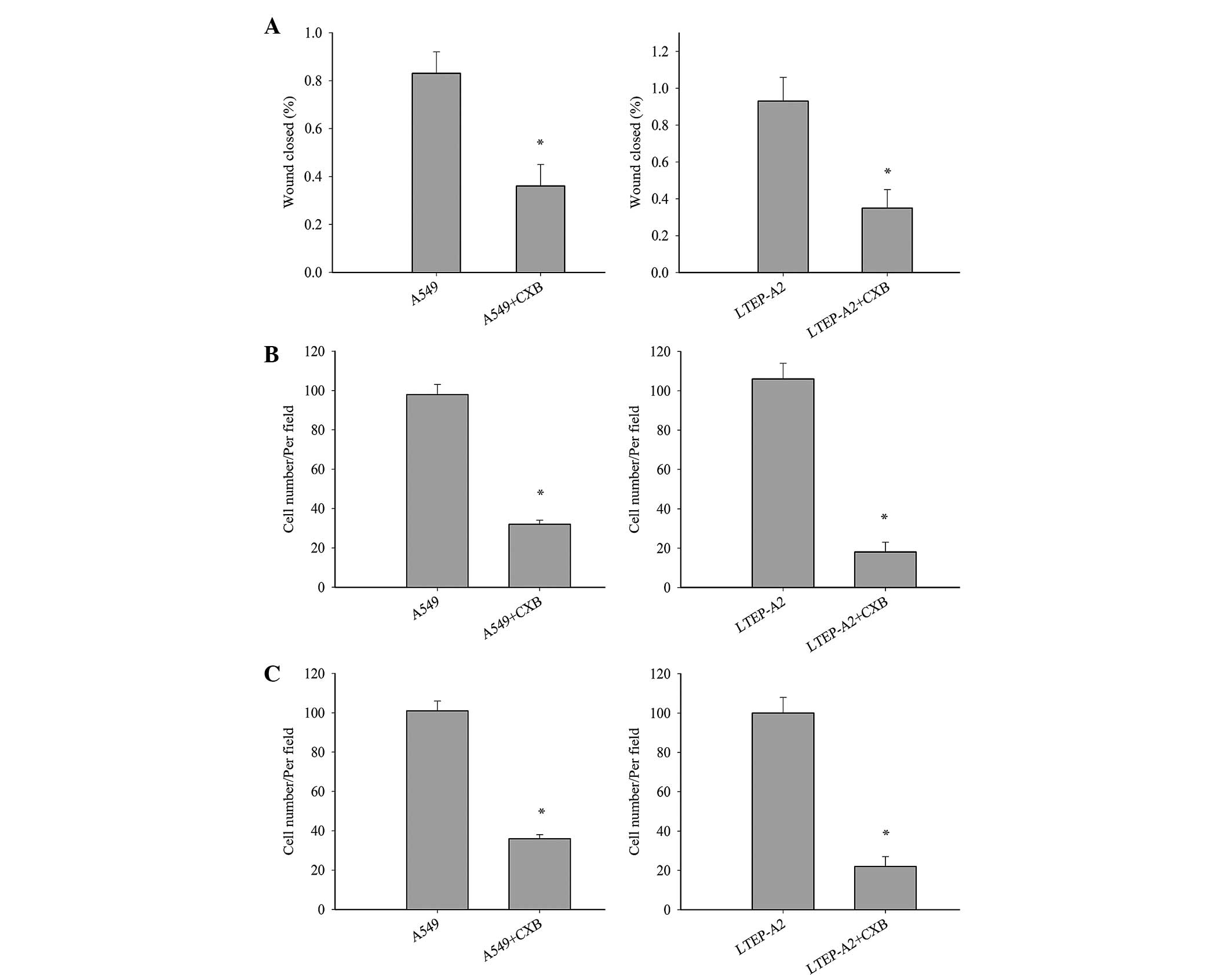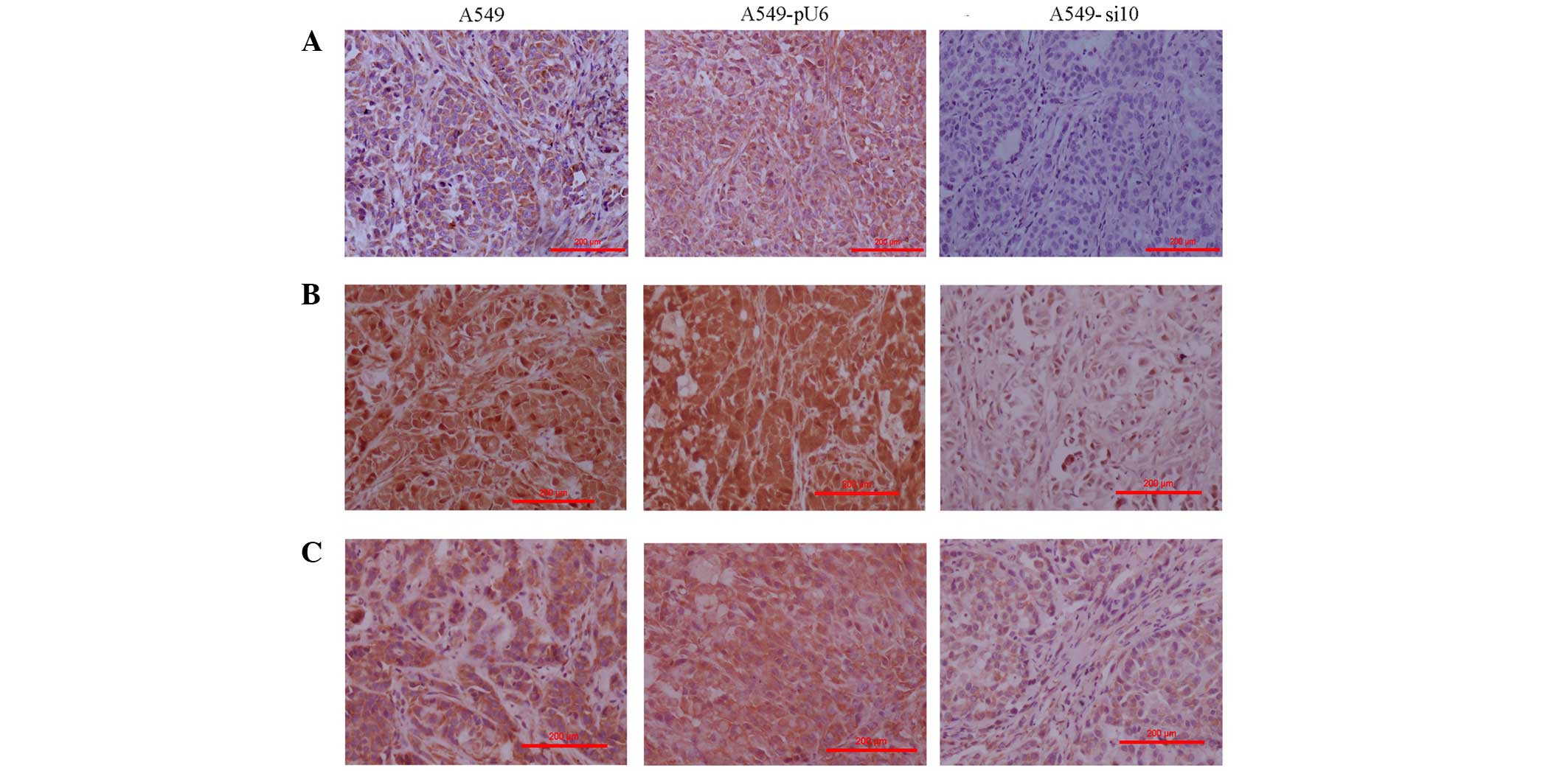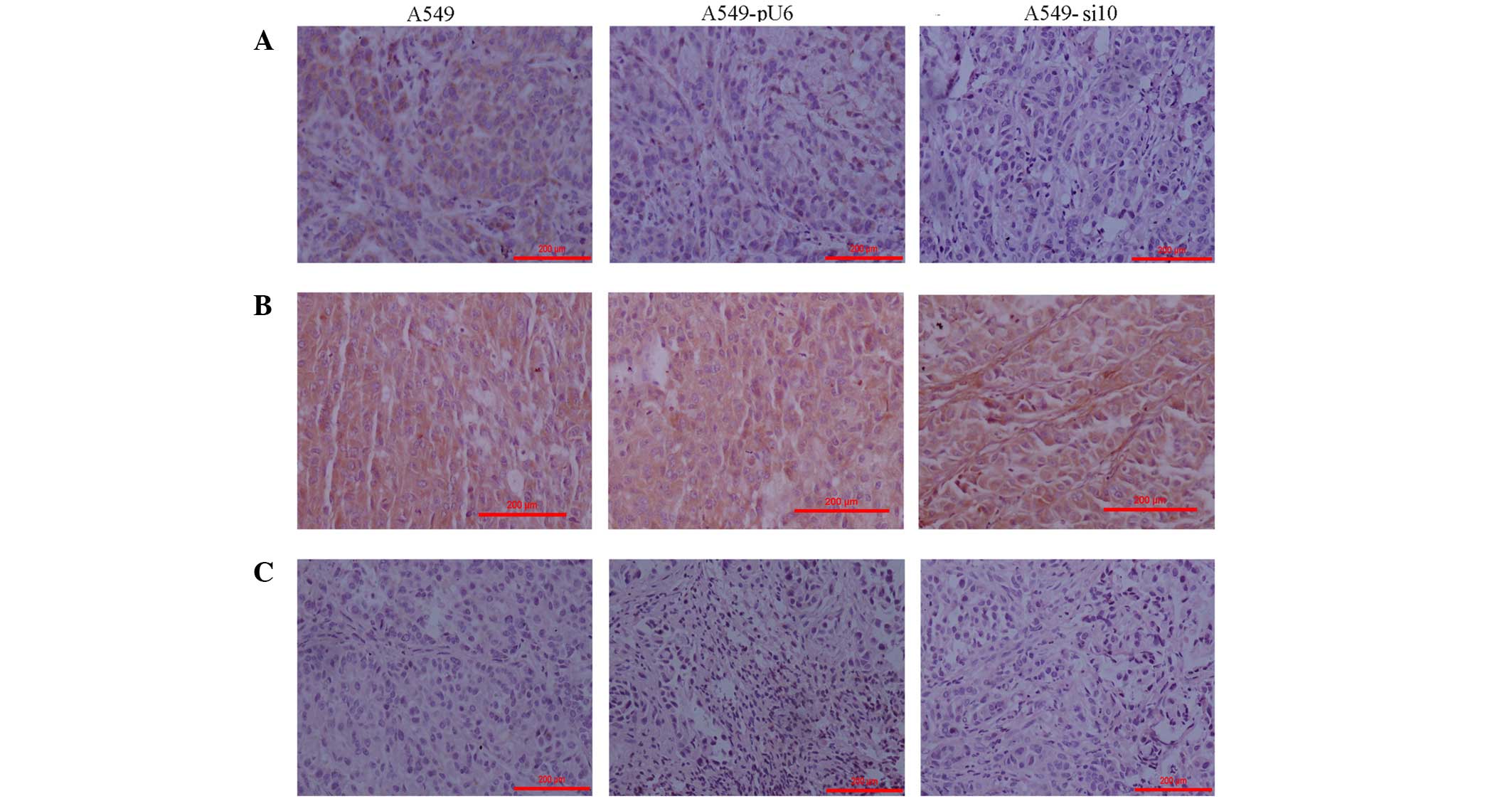|
1
|
Torre LA, Bray F, Siegel RL, Ferlay J,
Lortet-Tieulent J and Jemal A: Global cancer statistics, 2012. CA
Cancer J Clin. 65:87–108. 2015. View Article : Google Scholar : PubMed/NCBI
|
|
2
|
Tumino R, Capocaccia R, Traina A, Madeddu
A, Contrino ML and Zigon G: Estimates of cancer burden in Sicily.
Tumori. 99:399–407. 2013.PubMed/NCBI
|
|
3
|
Saver JL, Starkman S, Eckstein M, Stratton
SJ, Pratt FD, Hamilton S, Conwit R, Liebeskind DS, Sung G, Kramer
I, et al: FAST-MAG Investigators and Coordinators: Prehospital use
of magnesium sulfate as neuroprotection in acute stroke. N Engl J
Med. 372:528–536. 2015. View Article : Google Scholar : PubMed/NCBI
|
|
4
|
Balkwill F and Mantovani A: Inflammation
and cancer: Back to Virchow? Lancet. 357:539–545. 2001. View Article : Google Scholar : PubMed/NCBI
|
|
5
|
Zhang L, Conejo-Garcia JR, Katsaros D,
Gimotty PA, Massobrio M, Regnani G, Makrigiannakis A, Gray H,
Schlienger K, Liebman MN, et al: Intratumoral T cells, recurrence,
and survival in epithelial ovarian cancer. N Engl J Med.
348:203–213. 2003. View Article : Google Scholar : PubMed/NCBI
|
|
6
|
Ding Y, Tong M, Liu S, Moscow JA and Tai
HH: NAD+-linked 15-hydroxyprostaglandin dehydrogenase (15-PGDH)
behaves as a tumor suppressor in lung cancer. Carcinogenesis.
26:65–72. 2005. View Article : Google Scholar : PubMed/NCBI
|
|
7
|
Hussain SP and Harris CC: Inflammation and
cancer: An ancient link with novel potentials. Int J Cancer.
121:2373–2380. 2007. View Article : Google Scholar : PubMed/NCBI
|
|
8
|
Galon J, Costes A, Sanchez-Cabo F,
Kirilovsky A, Mlecnik B, Lagorce-Pagès C, Tosolini M, Camus M,
Berger A, Wind P, et al: Type, density, and location of immune
cells within human colorectal tumors predict clinical outcome.
Science. 313:1960–1964. 2006. View Article : Google Scholar : PubMed/NCBI
|
|
9
|
Whiteside TL: The tumor microenvironment
and its role in promoting tumor growth. Oncogene. 27:5904–5912.
2008. View Article : Google Scholar : PubMed/NCBI
|
|
10
|
Denkert C, Kobel M, Berger S, Siegert A,
Leclere A, Trefzer U and Hauptmann S: Expression of cyclooxygenase
2 in human malignant melanoma. Cancer Res. 61:303–308.
2001.PubMed/NCBI
|
|
11
|
Masferrer JL, Leahy KM, Koki AT, Zweifel
BS, Settle SL, Woerner BM, Edwards DA, Flickinger AG, Moore RJ and
Seibert K: Antiangiogenic and antitumor activities of
cyclooxygenase-2 inhibitors. Cancer Res. 60:1306–1311.
2000.PubMed/NCBI
|
|
12
|
Hold GL and El-Omar EM: Genetic aspects of
inflammation and cancer. Biochem J. 410:225–235. 2008. View Article : Google Scholar : PubMed/NCBI
|
|
13
|
Kokawa A, Kondo H, Gotoda T, Ono H, Saito
D, Nakadaira S, Kosuge T and Yoshida S: Increased expression of
cyclooxygenase-2 in human pancreatic neoplasms and potential for
chemoprevention by cyclooxygenase inhibitors. Cancer. 91:333–338.
2001. View Article : Google Scholar : PubMed/NCBI
|
|
14
|
Khuri FR, Wu H, Lee JJ, Kemp BL, Lotan R,
Lippman SM, Feng L, Hong WK and Xu XC: Cyclooxygenase-2
overexpression is a marker of poor prognosis in stage I non-small
cell lung cancer. Clin Cancer Res. 7:861–867. 2001.PubMed/NCBI
|
|
15
|
Gupta S, Srivastava M, Ahmad N, Bostwick
DG and Mukhtar H: Over-expression of cyclooxygenase-2 in human
prostate adenocarcinoma. Prostate. 42:73–78. 2000. View Article : Google Scholar : PubMed/NCBI
|
|
16
|
Chen YJ, Wang LS, Wang PH, Lai CR, Yen MS,
Ng HT and Yuan CC: High cyclooxygenase-2 expression in cervical
adenocarcinomas. Gynecol Oncol. 88:379–385. 2003. View Article : Google Scholar : PubMed/NCBI
|
|
17
|
Sahin M, Sahin E and Gümüslü S:
Cyclooxygenase-2 in cancer and angiogenesis. Angiology. 60:242–253.
2009.PubMed/NCBI
|
|
18
|
Fidler MJ, Argiris A, Patel JD, Johnson
DH, Sandler A, Villaflor VM, Coon J IV, Buckingham L, Kaiser K,
Basu S and Bonomi P: The potential predictive value of
cyclooxygenase-2 expression and increased risk of gastrointestinal
hemorrhage in advanced non-small cell lung cancer patients treated
with erlotinib and celecoxib. Clin Cancer Res. 14:2088–2094. 2008.
View Article : Google Scholar : PubMed/NCBI
|
|
19
|
Van Dyke AL, Cote ML, Prysak GM, Claeys
GB, Wenzlaff AS, Murphy VC, Lonardo F and Schwartz AG: COX-2/EGFR
expression and survival among women with adenocarcinoma of the
lung. Carcinogenesis. 29:1781–1787. 2008. View Article : Google Scholar : PubMed/NCBI
|
|
20
|
Banu N, Buda A, Chell S, Elder D, Moorghen
M, Paraskeva C, Qualtrough D and Pignatelli M: Inhibition of COX-2
with NS-398 decreases colon cancer cell motility through blocking
epidermal growth factor receptor transactivation: Possibilities for
combination therapy. Cell Prolif. 40:768–779. 2007. View Article : Google Scholar : PubMed/NCBI
|
|
21
|
Leahy KM, Ornberg RL, Wang Y, Zweifel BS,
Koki AT and Masferrer JL: Cyclooxygenase-2 inhibition by celecoxib
reduces proliferation and induces apoptosis in angiogenic
endothelial cells in vivo. Cancer Res. 62:625–631. 2002.PubMed/NCBI
|
|
22
|
Jiang MC, Liao CF and Lee PH: Aspirin
inhibits matrix metalloproteinase-2 activity, increases E-cadherin
production and inhibits in vitro invasion of tumor cells. Biochem
Biophys Res Commun. 282:671–677. 2001. View Article : Google Scholar : PubMed/NCBI
|
|
23
|
Li W, Wang H, Lai B, Yang X and Zhang C:
The effects of interfering COX-2 gene expression on malignant
proliferation of human lung adenocarcinoma A2 cell in vitro.
Zhongguo Fei Ai Za Zhi. 12:100–105. 2009.(In Chinese). PubMed/NCBI
|
|
24
|
Jungi TW: Assay of chemotaxis by a
reversible Boyden chamber eliminating cell detachment. Int Arch
Allergy Appl Immunol. 48:341–352. 1975. View Article : Google Scholar : PubMed/NCBI
|
|
25
|
Kurosumi M: Immunohistochemical assessment
of hormone receptor status using a new scoring system (J-Score) in
breast cancer. Breast Cancer. 14:189–193. 2007. View Article : Google Scholar : PubMed/NCBI
|
|
26
|
Harris RE, Casto BC and Harris ZM:
Cyclooxygenase-2 and the inflammogenesis of breast cancer. World J
Clin Oncol. 5:677–692. 2014. View Article : Google Scholar : PubMed/NCBI
|
|
27
|
Huang QC and Huang RY: The
cyclooxygenase-2/thromboxane A2 pathway: A bridge from rheumatoid
arthritis to lung cancer? Cancer Lett. 354:28–32. 2014. View Article : Google Scholar : PubMed/NCBI
|
|
28
|
Dubois RN: Role of inflammation and
inflammatory mediators in colorectal cancer. Trans Am Clin Climatol
Assoc. 125:358–372; discussion 372–373. 2014.PubMed/NCBI
|
|
29
|
Strazisar M, Mlakar V and Glavac D: The
expression of COX-2, hTERT, MDM2, LATS2 and S100A2 in different
types of non-small cell lung cancer (NSCLC). Cell Mol Biol Lett.
14:442–456. 2009. View Article : Google Scholar : PubMed/NCBI
|
|
30
|
Grimminger PP, Stöhlmacher J, Vallböhmer
D, Schneider PM, Hölscher AH, Metzger R, Danenberg PV and Brabender
J: Prognostic significance and clinicopathological associations of
COX-2 SNP in patients with nonsmall cell lung cancer. J Oncol.
1395902009.PubMed/NCBI
|
|
31
|
Zhu C, Liu J and Wang X: Detection of EGFR
and COX-2 expression by immunohistochemical method on a tissue
microarray section in lung cancer and biological significance.
Zhongguo Fei Ai Za Zhi. 13:107–111. 2010.(In Chinese). PubMed/NCBI
|
|
32
|
Li W, Yue W, Niu N, Zhang L, Zhao X, Ma L,
Yang X, Zhang C, Wang Y and Gu M: Expression and significance of
cyclooxygenase-2 in human lung cancer. Chinese-German J Clin Oncol.
13:203–206. 2014.
|
|
33
|
Li S, Gu Z, Xiao Z, Zhou T, Li J and Sun
K: Anti-tumor effect and mechanism of cyclooxygenase-2 inhibitor
through matrix metalloproteinase 14 pathway in PANC-1 cells. Int J
Clin Exp Pathol. 8:1737–1742. 2015.PubMed/NCBI
|
|
34
|
Atari-Hajipirloo S, Nikanfar S, Heydari A,
Noori F and Kheradmand F: The effect of celecoxib and its
combination with imatinib on human HT-29 colorectal cancer cells:
Involvement of COX-2, Caspase-3, VEGF and NF-κB genes expression.
Cell Mol Biol (Noisy-le-grand). 62:68–74. 2016.PubMed/NCBI
|
|
35
|
Shao Y, Li P, Zhu ST, Yue JP, Ji XJ, Ma D,
Wang L, Wang YJ, Zong Y, Wu YD and Zhang ST: MiR-26a and miR-144
inhibit proliferation and metastasis of esophageal squamous cell
cancer by inhibiting cyclooxygenase-2. Oncotarget. 7:15173–15186.
2016.PubMed/NCBI
|
|
36
|
Kim KM, Im AR, Kim SH, Hyun JW and Chae S:
Timosaponin AIII inhibits melanoma cell migration by suppressing
COX-2 and in vivo tumor metastasis. Cancer Sci. 107:181–188. 2016.
View Article : Google Scholar : PubMed/NCBI
|
|
37
|
Ho MY, Hung SW, Liang CM and Liang SM:
Recombinant viral capsid protein VP1 suppresses lung cancer
metastasis by inhibiting COX-2/PGE2 and MIG-7. Oncotarget.
5:3931–3943. 2014. View Article : Google Scholar : PubMed/NCBI
|
|
38
|
Miyata Y, Koga S, Kanda S, Nishikido M,
Hayashi T and Kanetake H: Expression of cyclooxygenase-2 in renal
cell carcinoma: Correlation with tumor cell proliferation,
apoptosis, angiogenesis, expression of matrix metalloproteinase-2,
and survival. Clin Cancer Res. 9:1741–1749. 2003.PubMed/NCBI
|
|
39
|
Sivula A, Talvensaari-Mattila A, Lundin J,
Joensuu H, Haglund C, Ristimäki A and Turpeenniemi-Hujanen T:
Association of cyclooxygenase-2 and matrix metalloproteinase-2
expression in human breast cancer. Breast Cancer Res Treat.
89:215–220. 2005. View Article : Google Scholar : PubMed/NCBI
|
|
40
|
Passlick B, Sienel W, Seen-Hibler R,
Wöckel W, Thetter O, Mutschler W and Pantel K: Overexpression of
matrix metalloproteinase 2 predicts unfavorable outcome in
early-stage non-small cell lung cancer. Clin Cancer Res.
6:3944–3948. 2000.PubMed/NCBI
|
|
41
|
Gridelli C, Maione P, Airoma G and Rossi
A: Selective cyclooxygenase-2 inhibitors and non-small cell lung
cancer. Curr Med Chem. 9:1851–1858. 2002. View Article : Google Scholar : PubMed/NCBI
|
|
42
|
Dohadwala M, Batra RK, Luo J, Lin Y,
Krysan K, Pold M, Sharma S and Dubinett SM: Autocrine/paracrine
prostaglandin E2 production by non-small cell lung cancer cells
regulates matrix metalloproteinase-2 and CD44 in
cyclooxygenase-2-dependent invasion. J Biol Chem. 277:50828–50833.
2002. View Article : Google Scholar : PubMed/NCBI
|
|
43
|
Marrogi AJ, Travis WD, Welsh JA, Khan MA,
Rahim H, Tazelaar H, Pairolero P, Trastek V, Jett J, Caporaso NE,
et al: Nitric oxide synthase, cyclooxygenase 2, and vascular
endothelial growth factor in the angiogenesis of non-small cell
lung carcinoma. Clin Cancer Res. 6:4739–4744. 2000.PubMed/NCBI
|
|
44
|
Liekens S, De Clercq E and Neyts J:
Angiogenesis: Regulators and clinical applications. Biochem
Pharmacol. 61:253–270. 2001. View Article : Google Scholar : PubMed/NCBI
|
|
45
|
Wu GS, Zou SQ, Liu ZR, Tang ZH and Wang
JH: Celecoxib inhibits proliferation and induces apoptosis via
prostaglandin E2 pathway in human cholangiocarcinoma cell lines.
World J Gastroenterol. 9:1302–1306. 2003. View Article : Google Scholar : PubMed/NCBI
|
|
46
|
Ghosh N, Chaki R, Mandal V and Mandal SC:
COX-2 as a target for cancer chemotherapy. Pharmacol Rep.
62:233–244. 2010. View Article : Google Scholar : PubMed/NCBI
|
|
47
|
Menter DG, Schilsky RL and DuBois RN:
Cyclooxygenase-2 and cancer treatment: Understanding the risk
should be worth the reward. Clin Cancer Res. 16:1384–1390. 2010.
View Article : Google Scholar : PubMed/NCBI
|
|
48
|
Harris RE: Cyclooxygenase-2 (cox-2)
blockade in the chemoprevention of cancers of the colon, breast,
prostate, and lung. Inflammopharmacology. 17:55–67. 2009.
View Article : Google Scholar : PubMed/NCBI
|
|
49
|
Hsu JY, Chang KY, Chen SH, Lee CT, Chang
ST, Cheng HC, Chang WC and Chen BK: Epidermal growth factor-induced
cyclooxygenase-2 enhances head and neck squamous cell carcinoma
metastasis through fibronectin up-regulation. Oncotarget.
6:1723–1739. 2015. View Article : Google Scholar : PubMed/NCBI
|
|
50
|
Asting AG, Farivar A, Iresjö BM, Svensson
H, Gustavsson B and Lundholm K: EGF receptor and COX-1/COX-2 enzyme
proteins as related to corresponding mRNAs in human per-operative
biopsies of colorectal cancer. BMC Cancer. 13:5112013. View Article : Google Scholar : PubMed/NCBI
|
|
51
|
Choi S, Lim TG, Hwang MK, Kim YA, Kim J,
Kang NJ, Jang TS, Park JS, Yeom MH and Lee KW: Rutin inhibits B [a]
PDE-induced cyclooxygenase-2 expression by targeting EGFR kinase
activity. Biochem Pharmacol. 86:1468–1475. 2013. View Article : Google Scholar : PubMed/NCBI
|
|
52
|
Chang CH, Huang YL, Shyu MK, Chen SU, Lin
CH, Ju TK, Lu J and Lee H: Sphingosine-1-phosphate induces VEGF-C
expression through a MMP-2/FGF-1/FGFR-1-dependent pathway in
endothelial cells in vitro. Acta Pharmacol Sin. 34:360–366. 2013.
View Article : Google Scholar : PubMed/NCBI
|
|
53
|
Kim D, Dai J, Park YH, Fai L Yenwong, Wang
L, Pratheeshkumar P, Son YO, Kondo K, Xu M, Luo J, Shi X and Zhang
Z: Activation of EGFR/p38/HIF-1α is pivotal for angiogenesis and
tumorigenesis of malignantly transformed cells induced by
hexavalent chromium. J Biol Chem. May 25–2016.(Epub ahead of
print). View Article : Google Scholar
|
|
54
|
Lee HC, Su MY, Lo HC, Wu CC, Hu JR, Lo DM,
Chao TY, Tsai HJ and Dai MS: Cancer metastasis and EGFR signaling
is suppressed by amiodarone-induced versican V2. Oncotarget.
6:42976–42987. 2015.PubMed/NCBI
|



